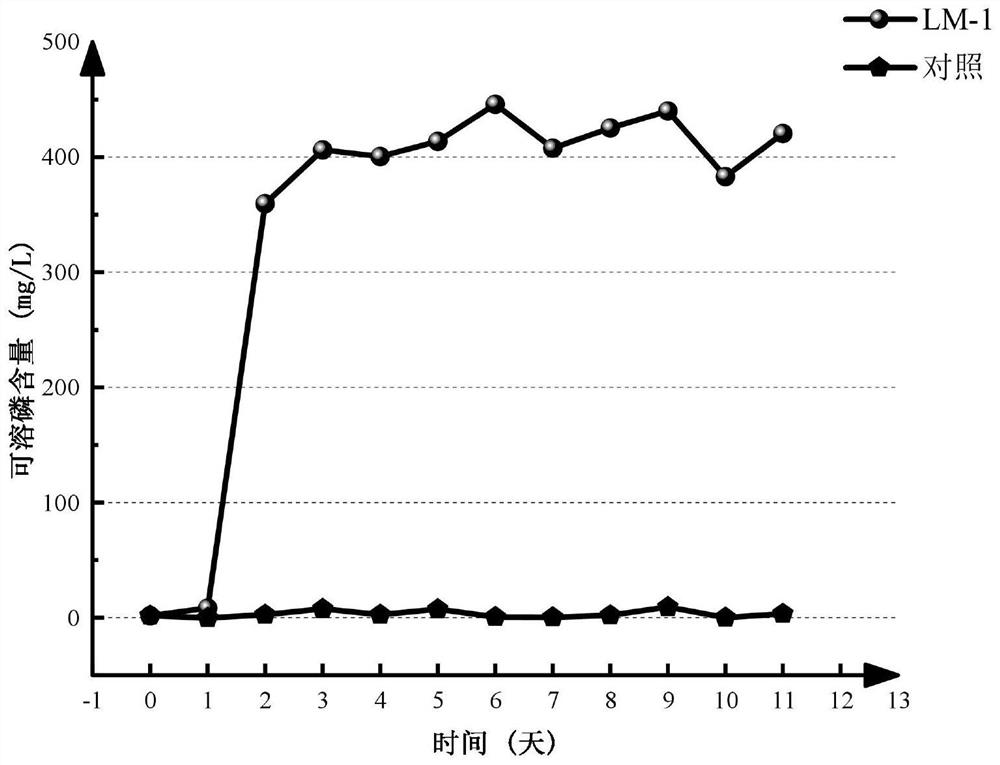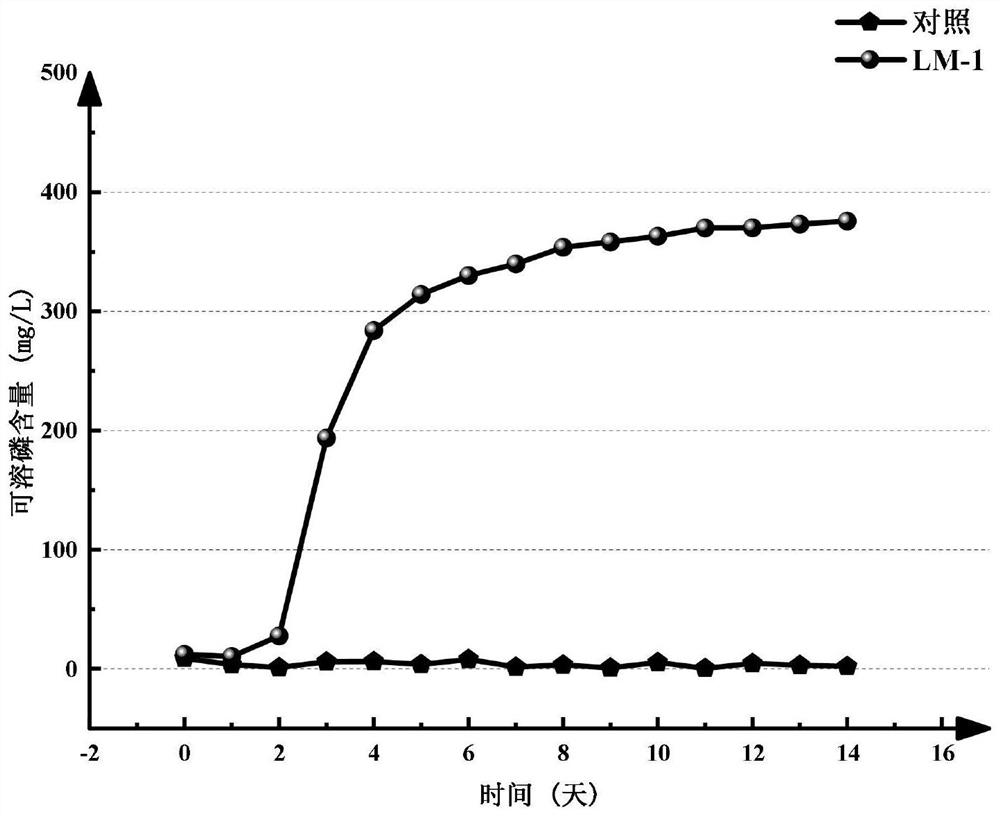Low-temperature-resistant saline-alkaline-tolerant phosphate solubilizing bacterium as well as culture method and application thereof
A low-temperature-resistant, salt-alkali-resistant technology, applied in the field of applied microorganisms, can solve the problems of ineffective phosphorus solubilization, inhibition of physiological activity, and microbial metabolic activities that are easily affected by temperature, so as to increase the content of soluble phosphate and reduce the amount of phosphate fertilizer Use, the effect of strong resistance to stress
- Summary
- Abstract
- Description
- Claims
- Application Information
AI Technical Summary
Problems solved by technology
Method used
Image
Examples
Embodiment 1
[0025] This example provides the application of a low-temperature-tolerant salt-alkali-tolerant phosphate-solubilizing bacterium (Acinetobacter calcoaceticus QY-3) to decompose inorganic phosphorus under low-temperature saline-alkali conditions.
[0026] The low-temperature-resistant salt-alkali-tolerant phosphorus-dissolving bacteria provided in this example grows on LB agar medium at 30°C for 24 hours, and its colony characteristics are: the colony is round, milky white in color, smooth in surface, sticky and easy to provoke, and the edge Complete; use scanning electron microscope to observe the morphology of the bacteria, such as figure 1 shown. The LB agar medium formula is as follows: 5 g of yeast extract, 10 g of NaCl, 10 g of tryptone, 16 g of agar powder, and 1000 ml of deionized water.
[0027] The present embodiment provides a basal medium for culturing the above-mentioned low-temperature-tolerant salt-alkali-tolerant phosphate-solubilizing bacteria, the basal mediu...
Embodiment 2
[0030] What this example provides is the screening and identification of Acinetobacter calcoaceticus QY-3 of the present invention:
[0031] (1) Screening of QY-3
[0032] Acinetobacter calcium acetate QY-3 provided in this example was isolated from the saline-alkali soil of Xiaokongtonggou, Qingyang City, Gansu Province, and was sampled in November 2020 and brought back to the laboratory for cryopreservation. Accurately weigh 20g of soil into a 250ml conical flask containing 160ml of sterile water, stir and mix well and let stand for 30min.
[0033]Take 20ml of supernatant in a 250ml conical flask containing 150ml of the inorganic phosphorus liquid basal medium described in Example 1, 15 ° C, 160rmp shaker culture for 3 days, the concentration of the cultured bacterial solution reaches 10 8 pcs / ml enriched bacterial solution.
[0034] Set the pH value 8, 10g / L NaCl in turn; pH value 8, 30g / L NaCl; pH value 8, 50g / L NaCl; pH value 9, 10g / L NaCl; pH value 9, 30g / L NaCl differ...
Embodiment 3
[0039] This example provides the determination of the ability of Acinetobacter calcoaceticus QY-3 to dissolve phosphorus under low-temperature alkaline conditions.
[0040] (1) Culture medium: an inorganic phosphorus liquid basal medium with a pH of 9 was used.
[0041] (2) Determination of the ability of strain QY-3 to dissolve phosphorus under low temperature and alkaline conditions
[0042] Activation and enrichment: After the strains are stored in cryopreservation tubes and activated, pick the strains and inoculate them into a 150ml conical flask containing 50ml of inorganic phosphorus liquid basal medium, cultivate at 15°C for 48h, and dilute to 10 cells. 8 pcs / ml.
[0043] According to the inoculum of 3%, it was inoculated into a 250ml Erlenmeyer flask containing 160ml of liquid basal medium. The strains were set up in three repeated shake flasks, and the sterile liquid medium was used as a control, and were cultured at 15°C and 160rmp. The content of soluble phosphoru...
PUM
 Login to View More
Login to View More Abstract
Description
Claims
Application Information
 Login to View More
Login to View More - R&D
- Intellectual Property
- Life Sciences
- Materials
- Tech Scout
- Unparalleled Data Quality
- Higher Quality Content
- 60% Fewer Hallucinations
Browse by: Latest US Patents, China's latest patents, Technical Efficacy Thesaurus, Application Domain, Technology Topic, Popular Technical Reports.
© 2025 PatSnap. All rights reserved.Legal|Privacy policy|Modern Slavery Act Transparency Statement|Sitemap|About US| Contact US: help@patsnap.com



